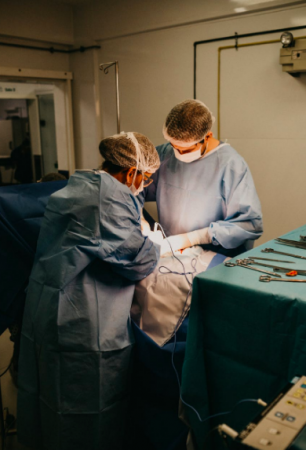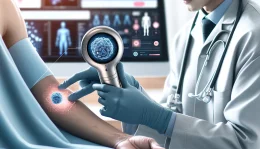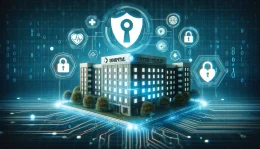For all of the amazing drugs and surgical procedures developed over the past decade, the most impactful development may be technology’s role in ongoing doctor-patient interactions.
A 2018 metastudy published in the medical journal BMJ Open found overwhelming evidence for increased continuity of care. Of the studies reviewed, 82% showed statistically significant reductions in patient mortality. “Although all the evidence is observational, patients across cultural boundaries appear to benefit from continuity of care with both generalist and specialist doctors,” the study’s authors concluded.
Continuity of care is, quite literally, a life-and-death issue for patients. But doctors can’t follow patients around after they leave the hospital. Self-reporting by patients simply doesn’t provide enough — or reliable enough, or regular enough — data to care for chronic conditions.
What can doctors and patients do? Turn to technology.
What Happens at Home
Once a patient heads home from the hospital, it may be weeks or months before he sees his physician again. How can doctors know what’s going on at home? How can they minimize patient readmissions?
Mercy Virtual, which recently invested in Myia Health, sees continuous patient monitoring as the answer. “We decided to make an investment in them because we believe we will spend significant time and effort co-developing and helping guide development of their platform,” explained Gavin Helton, Mercy Virtual’s head of clinical integration, in a recent CNBC article. “We both agree that it’s better to treat patients earlier when we can prevent the progression of the disease.”
To help hospitals keep tabs on patients suffering from congestive heart failure, Mercy works with Myia Health to equip patients with a kit of sensors and monitoring devices. Heart failure patients now go home with a sleep sensor, a wireless scale, a digital blood pressure cuff, and more, depending on the severity of their condition.
Why heart failure? For one, heart disease is responsible for nearly a quarter of deaths in the U.S. each year. Second, heart health can be monitored with tools that most patients are familiar with.
“Heart problems are often preceded by warning signs that are relatively easy to spot with home monitoring,” noted Farzad Azimpour, Myia Health’s chief medical officer. “The key is catching them early.”
Mercy Virtual has been successful at deploying remote monitoring technology with patients who suffer from conditions like heart failure, in some instances reducing their chance of being readmitted to the hospital by more than 50%.
More Indicative Metrics at Home?
One challenge with cardiac monitoring is the confounding effect of the hospital environment.
When someone is admitted to a hospital, he’s in a state of stress. Although elevated blood pressure indicates increased strain on the heart, it’s tough to know in a hospital setting whether that pressure is normal for the patient. The challenge of artificially elevated blood pressure is so common, in fact, that it’s often nicknamed “white-coat hypertension.”
The same can be said for other metrics associated with heart failure. Getting enough sleep is essential for a healthy heart, but again: Is the heart patient sleeping poorly because he’s in a hospital bed or because he typically does?
Although the take-home nature of these devices solves part of that problem, it’s not the whole story. No single metric can provide the full picture to doctors — a patient could be a poor sleeper for reasons unrelated to his heart, for example — so Myia’s kit goes deeper.
“By itself, no one device in the kit is revolutionary,” said Azimpour. “The key is putting them together with technology that allows ongoing assessment by the patient’s doctor.”
As smart as Myia’s technology is, it’s not the only technology bridging the doctor-patient divide. Especially for remote patients, new tech devices pair well with multiple care techniques.
Making More of Next-Generation Devices
Next-generation monitoring devices are part of a broader push toward telemedicine, which uses remote sensors and communication tools to expand access to healthcare. As adoption grows, expect to see healthcare providers dropping in via video on patients whose data shows adverse signs.
“Physicians are adopting telehealth much faster than they adopted EHRs at a similar stage of market development,” Sylvia Romm, vice president of clinical transformation at American Well, explained. “Physicians’ increased willingness to see patients over video, in addition to the increasing physician shortage, high burnout rates and a more favorable reimbursement landscape, signals a boom in virtual visits over the next several years.”
The push for blended telehealth approaches will be led by two groups: patients who live in rural areas and high-volume medical organizations.
Already, the Department of Veterans Affairs operates the largest telehealth program in the U.S. “[It] totally changes the VA’s footprint for delivering care,” said Deborah Scher, executive adviser to the Secretary’s Center for Strategy Partnerships. About one in seven veterans has received at least some treatment through telehealth, according to the VA.
If a veteran is experiencing heightened stress levels, for example, devices may be able to pick that up via increased heart rate and sweat levels. A doctor who notices a persistent trend may reach out about chronic anxiety.
Advancements in technology won’t change healthcare alone; they’ll do it with the support of doctors and patients. Continuous care is a high bar, but it’s closer than ever.










